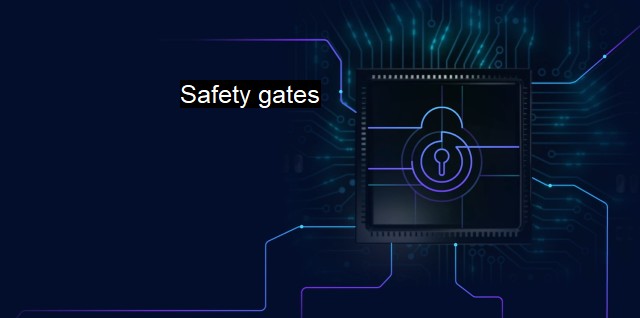What are Safety gates?
The Importance of Safety Gates in Cybersecurity: A Guide to Firewall, Antivirus Software, and Beyond.
Safety gates, within the concept of cybersecurity and antivirus tools, represent crucial defenses in protecting personal and corporate data from numerous threats posed within the digital sphere. These safeguards are formulated as walls of security that aim to prevent unauthorized access, scrutinize passing data, software, and communications, facilitating a system of high-level scrutiny instrumental in early detection of intrusion attempts.In simple terms, safety gates operate using a metaphorical scenario in which an individual's system or network is a fortress and the safety gates are the actual gates to this fortress. Thus they control, examine, monitor and regulate the traffic entering or leaving the "fortress."
For robust cybersecurity, safety gates take multiple configurations, such as firewalls, domain name system (DNS) filters and security gateways, antivirus tools, Anti-spam, the distribution of malicious attachment detection tools and more. They act as a line of defense by regulating the types of traffic allowed in or out of the network, protecting against breaches, virus attacks, spam, phishing, malware, and other cyber threats.
Firewalls, as one of the earliest types of safety gates, are designed to block or restrict access to certain sites or applications classified as high risk or unrelated to business processes. The potential risks could be everything from unsecured websites to malicious scripts, spyware, malware, or potential virus launch pads that are weaved into some downloadable content.
Domain Name System filters, a more evolved form of safety gates, are designed to respond to domain-specific threats. Specifically created to confront growing threats like phishing, browser hijackers and certain forms of malware, DNS filters block users' access to known malicious websites and links preventing them from downloading harmful content unknowingly.
Then there are security gateways, compact, intricate versions of safety gates serving as hubs that analyze traffic to and from various points in a network. They intelligently segment and categorize different types of traffic ( emails, ftp transfers, video conferences), visually representing them to facilitate easier monitoring for potential breaches or evaluating threat levels.
In combination, safety gates bolster the security of local and remote device interconnection and communication. They become a quintessential part of a multi-level defense-in-depth strategy for organizations, providing an extra layer of girth to the company's security infrastructure.
Antivirus programs are part and parcel of cybersecurity safety gates, serving as frontline soldiers against malware, ransomware, spyware, adware, and other similar threats. They screen, identify, quarantine and eliminate malware before it can wreak havoc on the system. Most modern antivirus tools are embedded with real-time scanning features which constantly monitor the system for potential threats.
There's an element of adaptability and learning that is part and parcel of safety gate technology. Safety gates, as sturdy and fixed as they might sound, fetch data that aids them in predicting and detecting newer threats and cyberspace vulnerabilities.
The reality of safety gates is that they aren't impregnable, absolute degrees of protection. The outer limits of the internet are filled with highly adaptive threats with hackers tirelessly working on new ways to penetrate these safety measures. Regular patching, updates, safety gate additions, configurations and adapting to ever-changing threat landscapes are essential elements of staying safe as the volatile digital realm evolves.
The digital world is fraught with a myriad of threats. For proper safety, systematic, multifaceted and robust measures such as safety gate solutions play a vital role. Paired with consistent updates and informed operation, they can present a formidable guard against the multitude of cyber threats that lurk in every corner of the virtual world.

| | A | | | B | | | C | | | D | | | E | | | F | | | G | | | H | | | I | | | J | | | K | | | L | | | M | |
| | N | | | O | | | P | | | Q | | | R | | | S | | | T | | | U | | | V | | | W | | | X | | | Y | | | Z | |
| | 1 | | | 2 | | | 3 | | | 4 | | | 7 | | | 8 | | |||||||